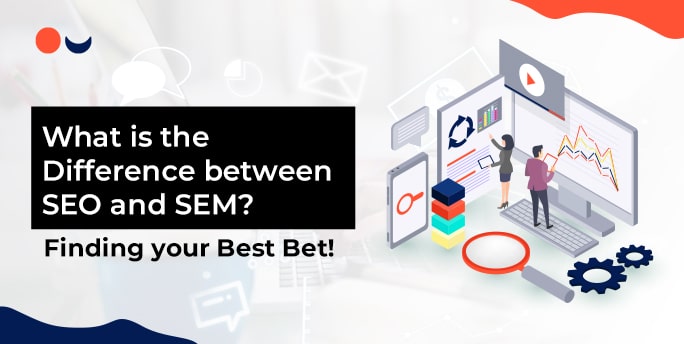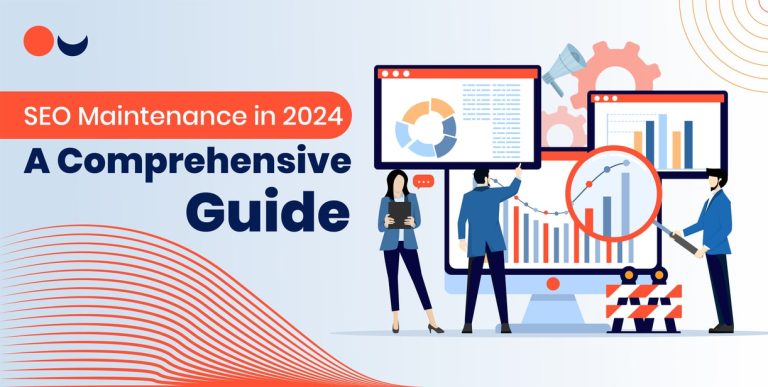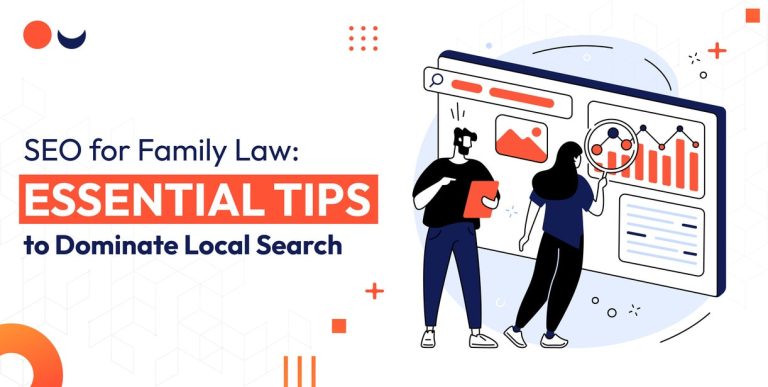Are you new to the world of digital marketing and feeling confused about the terms SEO and SEM? Don’t worry, you’re not alone! Many people use these acronyms interchangeably or mix up their meanings.
However, understanding the difference between SEO (Search Engine Optimization) and SEM (Search Engine Marketing) is crucial in creating successful online strategies that can help businesses reach their target audience effectively.
In this blog post, we’ll break down each term’s definition, benefits, and drawbacks so that you can decide which approach best fits your goals. So, let’s jump right into it and discover what makes your best bet when it comes to driving traffic to your website!
Introduction to SEO & SEM
Search Engine Optimization, or “SEO” for short, is the process of improving the visibility and discoverability of your content in search engine results pages, or “SERP.” SEM, on the other hand, is short for “Search Engine Marketing,” and refers to the paid strategies used to improve your content’s visibility and ranking in SERP.
So, what’s the difference between SEO and SEM? In a nutshell, SEO is all about optimizing your content to rank higher in organic (i.e., unpaid) search results, while SEM focuses on paid strategies to achieve similar goals.
However, it’s important to note that the two terms are often used interchangeably, as they both aim to improve your content’s visibility in SERP. That being said, there are some key differences that you should be aware of when deciding which strategy is right for you.
For starters, SEO is a long-term strategy that requires ongoing effort and vigilance, whereas SEM is a more short-term approach that can provide quick results with less commitment. Additionally, SEO typically relies on organic methods to improve visibility (such as optimizing website content), while SEM may also utilize paid methods (such as pay-per-click advertising).
Finally, it’s worth noting that SEO and SEM are not mutually exclusive; in fact, they often work best when used together. By combining optimized content with targeted ads, you can create a powerful marketing strategy that will help you reach your goal.
Also Read: How To Become An SEO Expert In 2023?
What is SEO?
The process of raising a website’s position on search engine results pages is known as search engine optimization, or SEO. The likelihood that someone will locate the website increases with its rating. The use of keywords, backlinks, and metadata are just a few of the many elements that go into SEO.
What is SEM?
Search engine marketing, or SEM, is a digital marketing strategy that combines the power of search engine optimization (SEO) with paid advertising to help businesses reach new customers and grow their online visibility.
While SEO focuses on improving your website’s organic search results (i.e., getting your site to rank higher in Google’s search results), SEM goes a step further by also incorporating paid advertising tactics, such as pay-per-click (PPC) advertising and display advertising.
By using both SEO and SEM tactics, businesses can have the best of both worlds: improved organic visibility for their website coupled with targeted ad campaigns that will help them reach even more potential customers.
Difference Between SEO and SEM
SEO and SEM are two digital marketing strategies that are often used interchangeably, but they actually have quite different goals. SEO is all about improving your website’s organic search engine rankings, while SEM is more focused on paid advertising placements.
To really understand the difference between SEO and SEM, we need to take a closer look at each term:
SEO stands for “search engine optimization.” This simply means making your website as search engine friendly as possible, so that you rank higher in organic search results. This can be accomplished through things like optimizing your website’s title tags and meta descriptions, using keyword-rich content, and building high-quality backlinks.
SEM, on the other hand, stands for “search engine marketing.” This is a broader term that encompasses both SEO and paid advertising tactics. So, while SEM does include optimizing your website for better search engine visibility, it also encompasses paid efforts like Pay-Per-Click (PPC) advertising and display advertising.
Both SEO and SEM are important pieces of the puzzle when it comes to online marketing. And while they do have some overlap, they should be considered separate strategies with different goals. If you want to drive more traffic to your website organically (i.e., without paying for it), then focus on SEO. But if you want to reach potential customers through paid ads, then SEM is the way to go.
When should I use SEO vs. SEM
If you’re wondering whether SEO or SEM is the best way to improve your website’s visibility and draw traffic, you’re not alone. Both SEO (search engine optimization) and SEM (search engine marketing) are effective means of online marketing, but they serve different purposes and achieve different results.
Here’s a quick rundown of the differences between SEO and SEM:
SEO is all about improving your website’s ranking in search engine results pages (SERPs). This can be done through optimizing your website’s content, structure, and on-page elements like titles, descriptions, and keywords.
SEM goes beyond just SEO, also including paid advertising efforts like pay-per-click (PPC) campaigns.
So, when should you use SEO vs. SEM? Generally speaking, it’s best to focus on SEO if you’re looking to improve your organic search visibility and draw traffic that will convert into customers without spending money on advertising.
If you have the budget for it and want to see faster results, however, running a PPC campaign in addition to working on SEO can be a good strategy.
Advantages and Disadvantages of SEO and SEM
The practice of increasing a website’s ranking on search engines is known as search engine optimization (SEO). The likelihood that someone will locate the website increases with its rating. SEO can be done on-page (on the website itself) or off-page (on other websites).
Search Engine Marketing (SEM) is the practice of buying ads on search engines. These ads can appear in the form of text, images, or video. SEM is a way to directly market your website to people who are searching for it.
There are advantages and disadvantages to both SEO and SEM. Here are some things to consider:
Advantages of SEO
· Can be done without spending any money
· Improves organic reach of a website
· Builds trust and credibility with users
· Helps target specific keywords and phrases
· Can be used to improve other marketing efforts (i.e. social media marketing, content marketing)
Disadvantages of SEO
· Takes time to see results
· Requires ongoing effort to maintain results
Advantages of SEM
· Can generate quick results
· Allows you to directly target your audience
· The payment is only made for the ads that have been clicked
Disadvantages of SEM
· Can be costly
· Can be difficult to track ROI
· Requires ongoing effort
Strategies for Implementing Both
There are a few key things to keep in mind when trying to decide which strategy is best for your business. First, consider your budget and whether you can afford to invest in both SEO and SEM.
Second, think about your target audience and whether they are more likely to search for you through organic results or paid ads. Finally, consider your own resources and whether you have the time and skills necessary to implement an effective SEO or SEM strategy.
If you decide that investing in both SEO and SEM is the right choice for your business, there are a few key strategies to keep in mind when implementing both. First, it’s important to create high-quality content that is relevant to your target audience.
This content should be optimized for both organic search results and paid ads. Second, focus on building strong backlinks from other high-quality websites. This will help improve your organic search rankings as well as making your paid ads more effective. Finally, make sure to track your progress over time so you can see which strategy is yielding the best results for your business.
How much time does SEO and SEM take?
SEO and SEM are two of the most effective digital marketing strategies for driving traffic to a website. But how long do they take to work?
SEO can take weeks or even months to start giving you tour desired results. It depends on a number of factors, including the competition for your target keywords and how well your website is optimized for search. However, once you start ranking for your target keywords, you can expect to see a steady stream of organic traffic coming to your site.
SEM, on the other hand, can deliver results much faster. With SEM, you’re essentially paying for placement in the search results, so you can immediately start getting traffic to your site. However, SEM campaigns need to be carefully managed and monitored in order to be effective, so they may require more time and resources than SEO.
Tips for Using the Right Mix of SEM and SEO
Search Engine Marketing (SEM) is a type of online marketing that seeks to promote websites by increasing their visibility in search engine results pages (SERPs).
SEO, on the other hand, is a subset of SEM. It’s the process of optimizing your website to rank higher in SERPs.
Here are a few tips for using the right mix of SEO and SEM:
Start with keyword research
Use keyword research to find out what people are searching for when they’re looking for products or services like yours. This will help you determine which keywords to target with your SEO and SEM campaigns.
Create compelling content
Once you know which keywords to target, create content that is relevant and engaging. This will not only help you rank higher in SERPs, but it will also help you attract more click-throughs from potential customers.
Optimize your website
Make sure your website is optimized for both SEO and SEM. This means using the right keyword density, as well as making sure your website loads quickly and is mobile-friendly.
Track your results
Monitor your SEO and SEM campaigns closely to see what’s working and what isn’t. You can use tools like Google Analytics to track your progress and make changes accordingly.
Things to consider before opting between SEO and SEM
When trying to determine the best option for your business, you should consider a few key factors:
. Your business goals
· Your target market
· Your budget
· Your competition
Taking all of these factors into account will help you make the best decision for your business. If you have a limited budget, you may want to focus on SEO so that you can rank higher in organic search results.
However, if you have a larger budget, SEM may be a better option because it allows you to pay for ads that will be seen by your target market. Ultimately, the best option for your business depends on your specific goals and needs.
Conclusion
In conclusion, SEO and SEM are two of the most important digital marketing strategies that businesses can use to increase their online visibility. While they may share some similarities, there are also some distinct differences between them.
When it comes to finding the best fit for your business, it all depends on your individual needs and goals. If you want a more organic approach with organic traffic, SEO is a better option; however, if you need fast results, then SEM might be more suitable for you.
Whatever route you decide to take though just remember always invest in data-driven decisions as this will ensure higher ROI rates over time!







